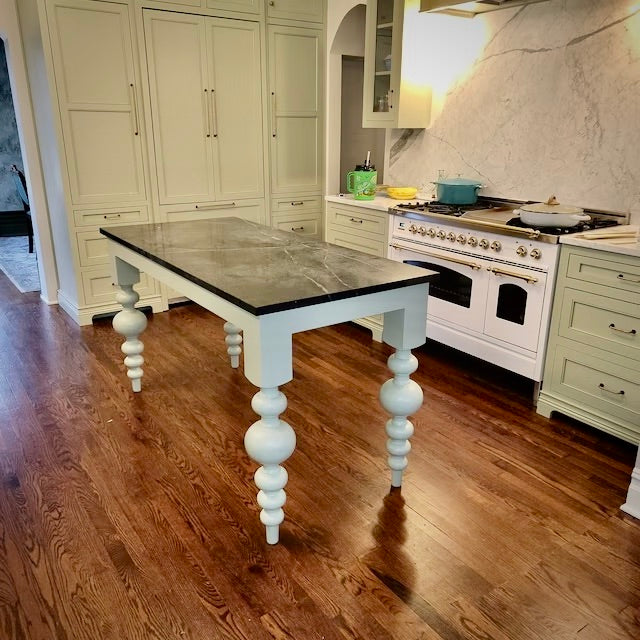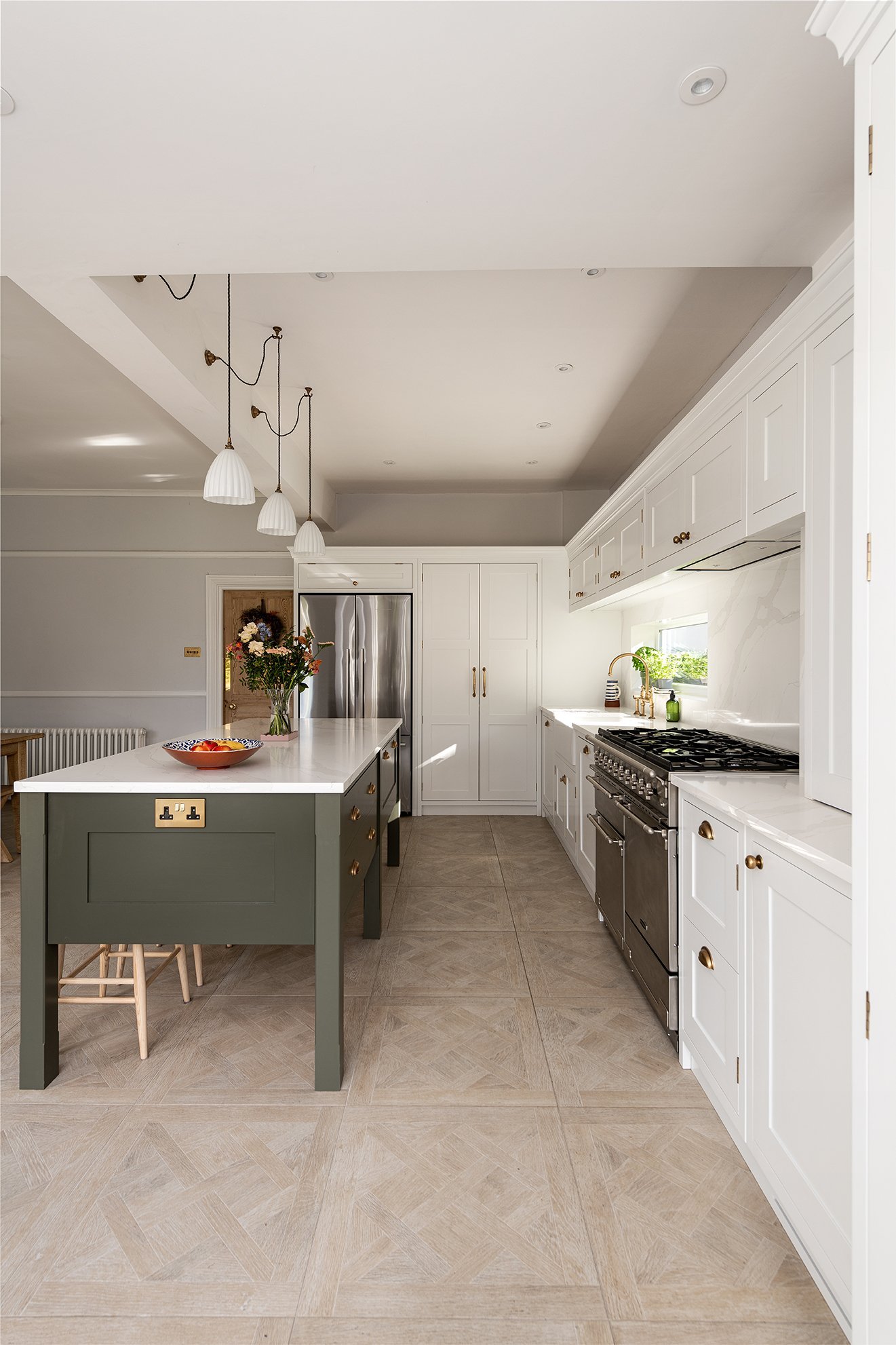Transform Your Kitchen with Gorgeous Kitchen Island Legs
Wiki Article
Necessary Tips for Choosing the Perfect Table for Your Kitchen
Choosing the ideal dining table for your kitchen area is more than just a matter of preference; it necessitates a comprehensive understanding of your room and needs. The form of the table plays a critical duty; while rectangular tables suit bigger areas, round ones foster affection, and extendable alternatives provide versatility. The table must harmonize with your cooking area's appearances and fit your household easily.Measure Your Room
Selecting the ideal eating table begins with a careful analysis of your readily available area. This foundational action ensures that the table not just fits pleasantly within the area however likewise matches the total design and functionality of your eating area.Take into consideration the flow of activity around the table. It is vital to leave sufficient space for chairs to be pulled out and for people to move the table without obstruction. A basic rule of thumb is to enable a minimum of 36 inches of clearance from the side of the table to the local wall or furniture piece. This makes sure simplicity of accessibility and convenience during meals.
Additionally, consider the number of individuals you generally amuse and whether you require added area for guests. Choosing for an extendable table can give flexibility, enabling you to suit varying numbers of restaurants. By accurately gauging your space, you prepared for picking an eating table that improves both the visual appeals and capability of your dining area.
Select the Right Shape

On the other hand, round tables are exceptional for smaller kitchens or intimate events, as they promote discussion by permitting everybody to encounter each various other. They also offer a sense of comfort and can fit well in tighter areas because of their absence of sharp corners. Oval tables offer the finest of both worlds, incorporating the size of rectangular tables with the affection of rounded ones, making them flexible for different setups.
Square tables are another alternative, specifically matched for square-shaped spaces. They create a modern-day and balanced look, promoting an equivalent dining experience for all seated.
Product Factors To Consider
When choosing a dining table, product considerations are paramount in identifying the table's longevity, upkeep demands, and general aesthetic. Wood is a classic option, supplying classic charm and toughness.Glass-topped tables provide a modern-day, sleek appearance and can make an area show up bigger due to their openness. They call for regular cleaning to avoid finger prints and smudges. Additionally, tempered glass is suggested for its extra strength and safety.

Last but not least, composite materials like MDF (Medium-Density Fiber board) or plywood are economical choices. These materials can mimic the look of solid timber however may not use the very same long life. They are normally less complicated to tidy but can be susceptible to water damage otherwise correctly secured.
Eventually, the selection of product need to align with your kitchen's style, your way of life needs, and your spending plan restrictions. (kitchen island legs)
Seating Capacity and Convenience
How do you figure out the appropriate seats capability and convenience for your eating table? This vital step entails analyzing both the physical space available in your kitchen and your home's useful requirements. Begin by gauging your kitchen location to make sure the table fits comfortably, enabling a minimum of 36 inches of clearance around it for simple motion. Take into consideration the number of people that typically eat together, as this will certainly influence the table dimension. For a household of four, a rectangle-shaped table of 48 inches long or a round table with a 48-inch diameter is typically adequate.The elevation of the table must ideally be around 30 inches, giving a well balanced ergonomic position for seated diners. Chairs need to have a seat height of 18 to 20 inches to ensure a comfy eating posture.
Style and Aesthetics
Selecting an eating table that matches your design and aesthetics involves stabilizing individual taste with the existing style of your dining room. The table is frequently the focal point of the kitchen, and its design should complement the general motif of the room. Whether your kitchen flaunts a contemporary, minimal appearance or a rustic, advice farmhouse beauty, the table you pick must balance with these elements to produce a natural and welcoming atmosphere.Take into consideration materials thoroughly; wood uses a classic allure and can vary from abundant mahogany for a standard seek to lighter oak for a contemporary feeling. Metal and glass tables, on the various other hand, can introduce a sleek, industrial edge to your cooking area. Do not neglect the table's shape-- rectangular tables are timeless and functional, while round and oblong alternatives can cultivate an extra intimate eating experience.
In addition, pay very close attention to information and coatings. A troubled surface may include personality and heat, whereas a shiny surface can add to a clean, contemporary aesthetic. Inevitably, your table should not only healthy effortlessly into your kitchen's layout however likewise reflect your individual design, boosting the space both functionally and visually.
Final Thought
Finally, selecting the ideal table for a kitchen area requires mindful examination of room, shape, material, seating ability, and visual consistency. Making sure a minimum clearance of 36 inches promotes comfy activity, while the selection of form enhances spatial dynamics. Product selection click resources influences longevity and design, making it essential to align with the cooking area's general aesthetic. Inevitably, a well-chosen table fosters a welcoming environment and suits the household conveniently, therefore enhancing the eating experience.
When selecting a dining table, material factors to consider are paramount in figuring out the table's durability, maintenance requirements, and general visual. For a household of four, a rectangular table of 48 inches long or a round table with a 48-inch size is typically adequate.
Do not ignore the table's shape-- rectangular tables are classic and flexible, while round and oval options can promote a more intimate Read Full Report dining experience. kitchen island legs.
Report this wiki page